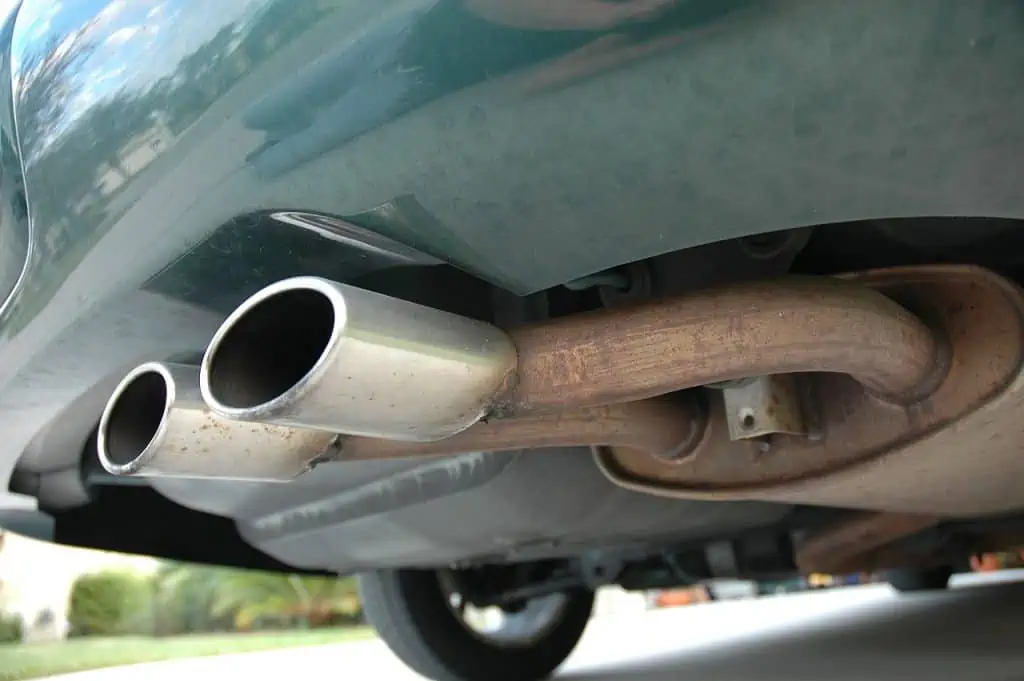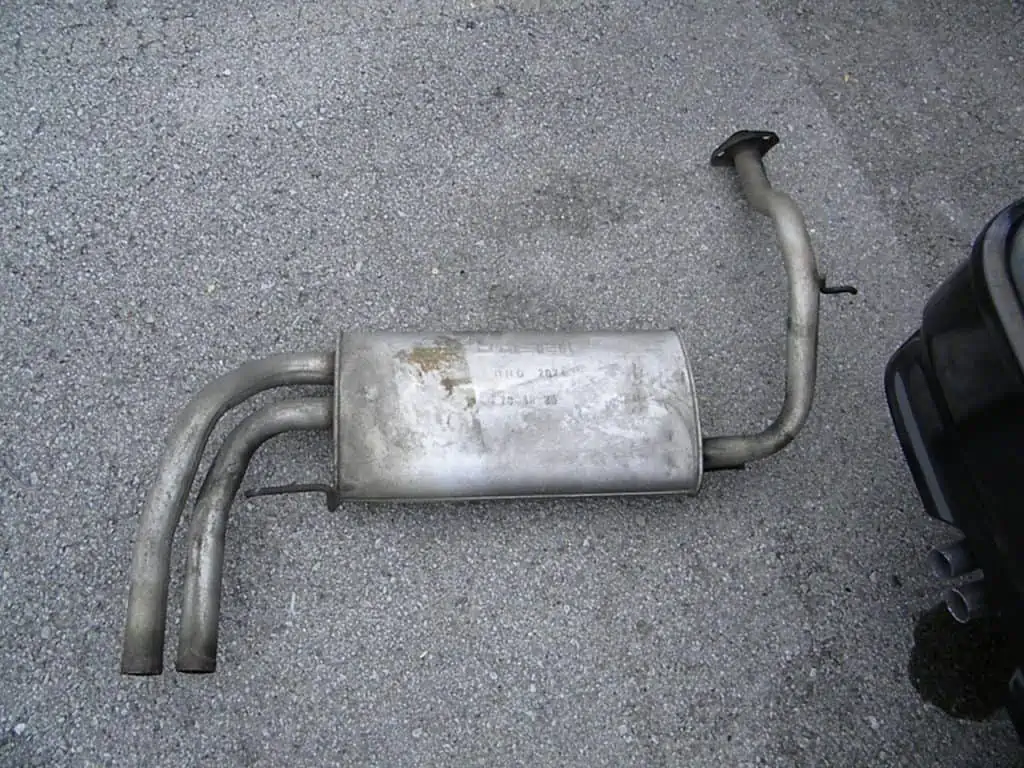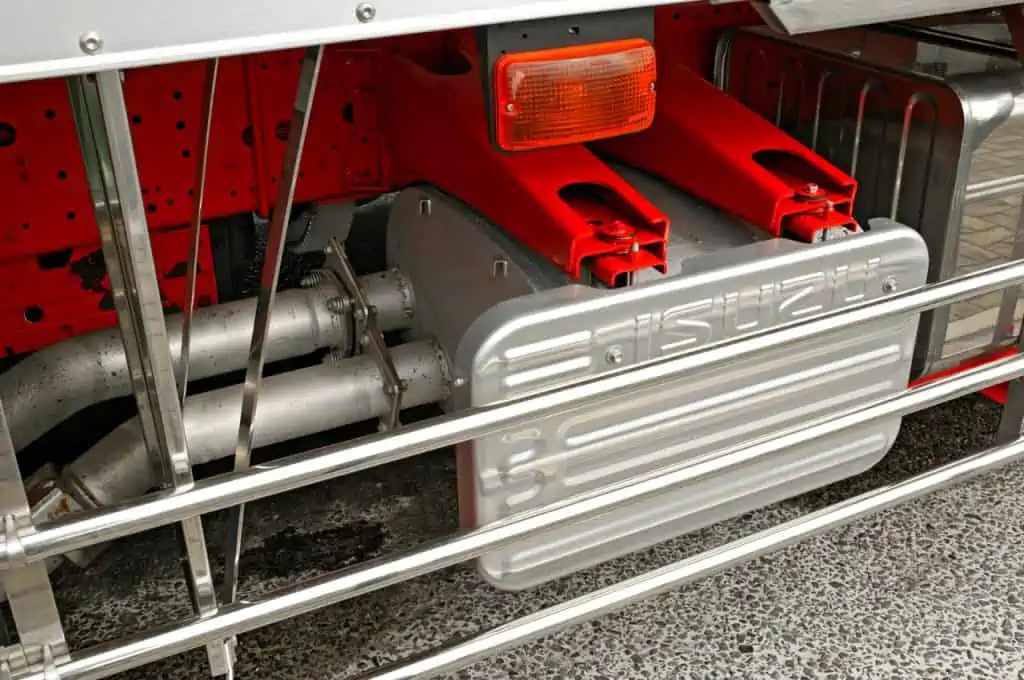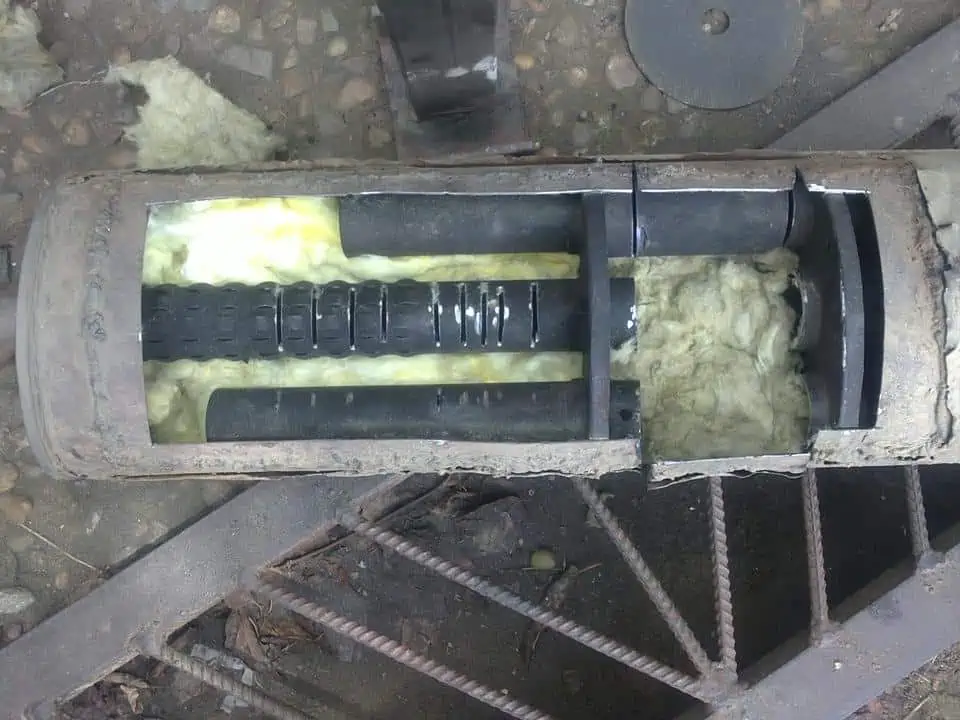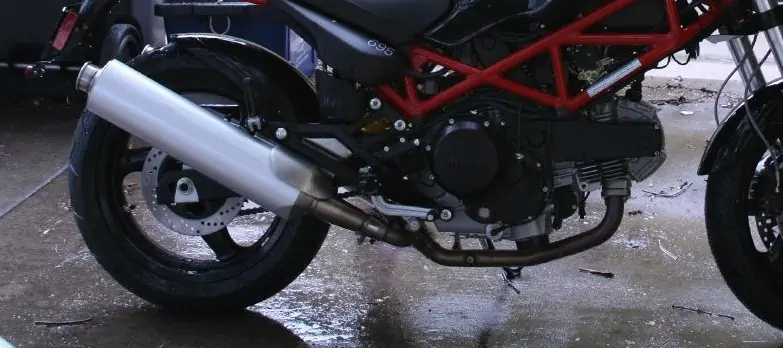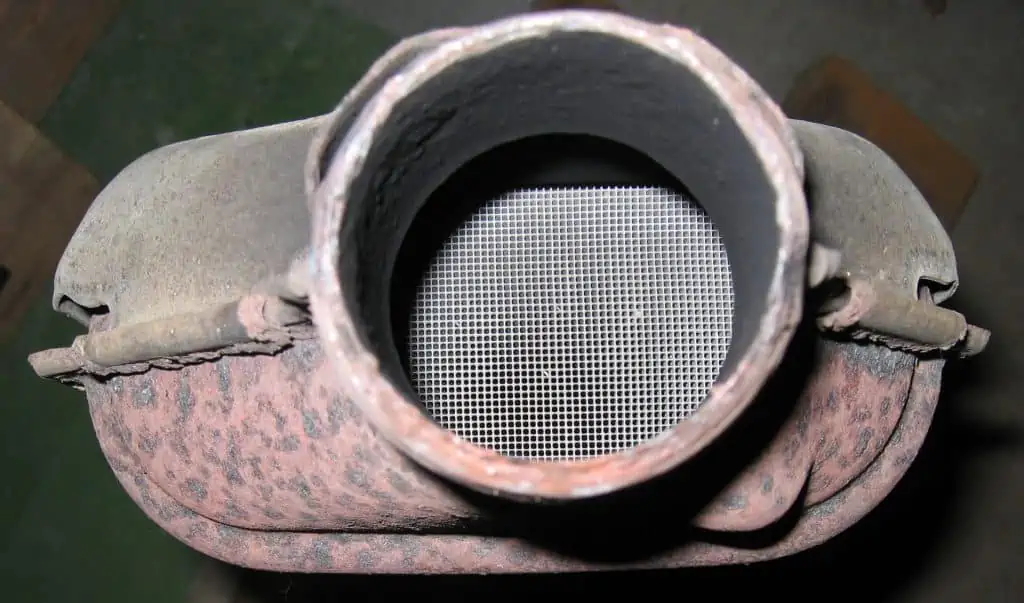If you are reading this, your car’s muffler is probably broken. Your mechanic has probably already given you an estimate, but you’re probably wondering if it’s accurate. Or is your mechanic taking advantage of you? In this piece, we’ll tell you more about how much a car’s muffler repair cost is.
If your muffler has blown out, you might start to worry about how much it will cost to fix it. You can also begin to wonder whether it will be worthwhile to fix it. There is a good chance that your muffler has to be fixed as your automobile becomes older.
You might be considering future repairs that will also need to be made. It’s crucial to consider the potential cost of any future repairs you might need to make. The typical muffler repair cost ranges from $160 to $240.
To determine if you have a muffler issue or not, you should also be aware of the symptoms of a bad muffler. In case you want to save some money, we’ll also show you how to fix it yourself.
A Muffler: What Is It?
As always, before we begin the process of fixing an automotive part, we want to explain what it does and how it functions. Understanding more about your car’s muffler will help you make wiser judgments about the muffler repair cost of your vehicle.
What is a muffler, then? The exhaust system of a vehicle includes a muffler. It is intended to lessen exhaust system noise, resulting in a quieter and smoother driving experience.
There won’t be a filter for the noise that an automobile emits without a muffler. The engine of most cars often makes a humming noise, while the exhaust usually makes a very faint roaring sound. This is because your exhaust system’s noise is muffled by the muffler.
Your automobile will sound significantly rougher without it or if the muffler is broken because there is no device filtering the sounds. The muffler for your car is located at the rear of the vehicle. Typically, it is an oval-shaped chamber that is located behind the rear bumper and the car’s exhaust points.
Dual tailpipes are attached to the muffler on a passenger car to reduce the sound produced by Steevven1 / CC BY 2.5. Your vehicle’s muffler is situated at the back of the car. It is often a chamber with an oval form that is situated behind the car’s bumper and exhaust points.
The Muffler vs. The Catalytic Converter: What Distinguishes Them?
The haziness is comprehensible. Both items are oval or tubular and are mounted beneath the automobile. Even worse, some articles illustrate the catalytic converter using pictures of mufflers. However, the two parts of your car’s exhaust system are distinct from one another.
The catalytic converter is located directly in the middle of the exhaust system, somewhere in the underbody of your car. It transforms the engine’s exhaust into less dangerous gasses.
As previously discussed, the muffler is utilized to lessen the noise the exhaust system creates and is located at the end of the exhaust system.
You now understand the purpose of a muffler, but how does it operate? Well, that depends on the kind of muffler your automobile has.
Which are the Different Types of Mufflers?
Depending on the manufacturer, different materials are used in different muffler designs. However, the four most typical types of mufflers are as follows:
1. The Turbo Mufflers
Contrary to their name, turbo mufflers can be used by any car and are not just for those with turbochargers. They are among the most prevalent kinds of mufflers seen in manufacturing vehicles.
Online, there is a lot of contradicting information regarding the origin of the name “turbo mufflers,” but it appears that this name came from the turbocharged Corvair of the 1960s, which had a unique muffler design from other OEM mufflers of the era.
Anyhow, let’s not linger on the ambiguous nomenclature. The gasses are sent back and forth within turbo mufflers using a network of perforated pipes that are typically arranged in an S form.
The exhaust gas will enter through one pipe, pass through one chamber, pass through another chamber, pass through yet another pipe, pass through still another pipe, flow into the rear chamber, and then eventually escape it.
The amount of exhaust gas flowing through the pipes is decreased by all this bouncing and movement, which quietens them. The chambers also have sound-absorbing panels or baffles that aid in noise absorption.
However, the flow of the exhaust gas is naturally constrained by this arrangement. Although they are highly effective at absorbing sound because of this, they are poor performers. This is due to backpressure, which we shall cover in more detail in the section on performance mufflers.
2. The Chambered Mufflers or Multiple Baffle Mufflers
The multiple baffle muffler often referred to as a chambered muffler occasionally is the second most popular kind of exhaust muffler. The muffler’s inside is divided into several chambers, as its name suggests.
Sound-canceling plates, commonly referred to as baffles, are used to construct the actual chambers. Exhaust noise will be muffled as exhaust gasses strike and bounce off the baffles, making it quieter.
They resemble turbo mufflers in many ways. The exhaust gas may flow more freely, though, because it doesn’t have to pass through a network of perforated pipes. Fewer limitations and higher performance follow from this. However, they won’t be as effective at reducing noise as turbo mufflers.
A muffler with pipes by CrowzRSA / CC BY-SA 4.0. The internal parts of a muffler will deteriorate over time, reducing how well it can muffle sounds. Additionally, unfiltered exhaust noises might be produced if the exhaust system has cracks or leaks because exhaust gases will seep into unintended areas.
3. The Straight-Through Muffler
Most straight-through mufflers are tubular in design. It contains an insulator and a glass fiber-wrapped tube that allows exhaust gas to pass directly through the muffler.
The noise from the exhaust is absorbed by the glass fiber and insulator. Straight-through mufflers are louder than other types of mufflers because they are less effective at absorbing noise because there are no sound-canceling chambers and the exhaust stream flows freely.
Straight-through mufflers can allow for better performance if they are properly built because they are far less constrictive. However, they frequently produce a loud, jarring noise. Your engine configuration will have a significant impact on the noise characteristic.
When customizing their vehicles, car enthusiasts who want their exhaust pipes to make a loud noise frequently use straight-through mufflers. Straight-through mufflers are wonderful if all you want to do is increase the amount of noise your car makes, but your neighbor won’t likely like it.
This should not be confused with straight-piping your exhaust or the term “straight-pipe.” A straight pipe is created when the catalytic converter and muffler are swapped out for a single pipe, eliminating the need for a filter between the exhaust headers and the tips.
That is why it is known as a straight pipe. Unfiltered exhaust gasses as a result cause higher noise and occasionally increased performance. Remember that driving a car without a catalytic converter is prohibited.
4. The Performance Mufflers
Performance mufflers are often a type of straight-through or chambered muffler. Performance mufflers have a resonance chamber, which is the primary distinction. The noise your car creates will be amplified in this chamber, making it sound louder and, most of the time, better.
Additionally, they often permit less constrained gas flow, which results in increased noise and decreased exhaust backpressure, both of which improve performance. You might wonder what exhaust backpressure is. Exhaust back pressure occurs when an automobile’s exhaust gas cannot pass freely through the exhaust system, building pressure inside the engine’s cylinder as a result.
This may prevent exhaust gasses from leaving the engine’s cylinder, eating up space that would otherwise go to fuel and air. Less horsepower will be produced by the engine as a result of its inability to burn as much gasoline and air as it requires. Because of this, performance mufflers typically feature a less constrictive design to reduce back pressure.
Performance muffler designs vary depending on the manufacturer because every manufacturer strives to produce mufflers with distinctive sound qualities.
For instance, Flowmaster mufflers frequently have a clearer and crisper sound than Borla mufflers, which typically have a more rumbly growl. Although some performance mufflers are constructed from titanium, the majority of mufflers are typically built from stainless steel or aluminized steel.
Additionally, vacuum valve technology is now frequently found in some performance mufflers. These valves can open and close, changing the performance and sound.
The exhaust will be quieter and perform better in terms of torque when it is closed. However, when the valves are opened, the exhaust will produce a completely different sound and perform better at higher RPMs.
Which are the Most Common Faulty Muffler Symptoms In Cars?
Let’s talk about the warning signals that your muffler is malfunctioning before we discuss the muffler repair cost. Remember that these symptoms may indicate an issue with the exhaust system as a whole rather than simply the muffler. To determine the source of the issue, you must examine the exhaust system.
A muffler on a large diesel-powered truck by Tennen-Gas / CC BY-SA 3.0. Mufflers for aftermarket vehicles are made by private businesses that are not connected to the car manufacturer. If they aren’t performance-focused products, they will frequently be far less expensive.
1. Exhaust Noise Is Very Loud
Your car’s exhaust noise changing is the most evident symptom that you’re likely to notice. Most automobiles are relatively silent, with only a faint noise emanating from the exhaust.
Your exhaust note will be louder and will sound rougher when the muffler corrodes or when there are cracks in the exhaust system. In rare situations, it might even sound like the engine in your automobile came from an old truck.
Over time, a muffler’s interior components will corrode, decreasing its ability to effectively block out noise. Additionally, if the exhaust system has fractures or leaks, exhaust gases will leak into places they shouldn’t, creating unfiltered exhaust noises.
Look for the source of the noise. If the noise is coming from the front, a header or exhaust manifold problem can be to blame. You most likely have an exhaust leak in one of the mid-pipes if the noise originates in the middle.
Last but not least, a muffler problem is probably to blame if the noise is coming from the back of the automobile. To check, jack up your automobile so you have more space, and then get underneath it.
Then, inspect the whole exhaust system for any obvious cracks or leaks. If you can’t locate it, we advise visiting a reputable auto repair facility and having a professional examine your vehicle.
One more thing: you can be hearing a slamming or knocking sound. One of your exhaust mounts may have broken loose in this situation, causing your muffler and tailpipes to drag on the ground.
You will have to reinstall it and change the mounts if this occurs. You should also look for any damage to your exhaust pipes and muffler.
2. Too Much Vibration
Sound moves mostly via the air by way of air vibration. Therefore, a leak in your exhaust or muffler will cause it to vibrate more than usual. Because the leak could be little and its vibrations might not be strong enough to influence the entire automobile, you might not notice this symptom.
When you crank the engine, though, you can experience extra vibration if the leak is sufficiently large. Check your mufflers and the exhaust system if you detect the car vibrating or producing a louder noise than usual.
3. A Deep Gas Smell
The most alarming symptom you’ll notice—or smell, to be more precise—is the sudden appearance of strong gas odors within your car. If you have an exhaust leak, the exhaust gases could leak into the cabin of your car.
If the odor is extremely overpowering, there is probably a leak occurring before the catalytic converter. This is because the catalytic converter would not have had a chance to filter the exhaust gas first.
In any event, this is a significant issue that requires quick attention. These gases are toxic and might harm your health. If you detect any toxic fumes in your car, check your exhaust system for leaks.
The interior of an exhaust muffler by Andei on / CC BY-SA 3.0. You might want to replace the muffler if it leaks and is more than five years old. Most mufflers last between five and seven years, although others might last much longer.
4. Poor Gas Mileage
Okay, so this final symptom isn’t precisely a sign of a muffler issue, but we’re including it nevertheless because it might be a sign of an exhaust system issue. Your car’s poor gas mileage could be caused by a variety of factors, including an exhaust leak.
This is particularly if the leak is discovered before the catalytic converter. Gas mileage won’t likely be impacted by a leak if it’s found on the muffler or after the catalytic converter.
What causes this, you ask? You must first gain a better understanding of your car’s exhaust system. The oxygen sensor in this system is often found in the exhaust manifold, immediately before the catalytic converter.
This sensor, as its name implies, keeps track of how much oxygen is present in exhaust gases. The car’s Engine Control Unit (ECU) will presume the engine is operating on a lean fuel and air combination when it senses a high level of oxygen (less fuel, more oxygen). To balance the mixture in this situation, the ECU will pump additional gasoline into the cylinders.
A balanced mixture must be used in a vehicle’s engine since, in some cases, a lean mixture can harm the engine. What impact does an exhaust leak have on this then? Therefore, oxygen from the outside will enter the exhaust system if you have an exhaust leak.
The sensors will think that your engine is operating on a lean mixture if the leak is discovered before the oxygen sensor. The ECU will then be instructed to inject additional fuel, which will result in the usage of more fuel than is necessary.
How Much Does the Muffler Repair Cost?
Now that you are aware of how mufflers function and the warning signals of a damaged muffler, let’s talk about how much it will cost to repair a muffler. There are two solutions you can try when your muffler breaks. First, you can fix a little leak on the muffler if you have one.
Applying epoxy to seal the leak is something you can accomplish on your own. Alternatively, a vehicle repair shop ought to be able to perform this for you if you don’t feel like getting your hands dirty. They can either weld or use epoxy to fix the muffler.
In either case, this keeps muffler repair cost, which is often between $50 and $150, to a minimum. This is simply a short-term solution, though. As soon as cracks start to show, more are sure to follow because your muffler is already rusting.
If your muffler has a leak and is older than five years, you may wish to completely replace it. Mufflers typically last between five and seven years, however, some can survive far longer. However, if it is this old, you should probably replace it because the interior is probably already rusting. The price varies depending on the make and model of the car, just like any other car item.
Typically, an OEM exhaust muffler costs $250 to $400. The typical cost of a new muffler is around $350. Add $100 for labor, and the total muffler repair cost comes to around $450.
The price will be significantly lower if you drive an older vehicle with a simpler muffler. For instance, we discovered that the exhaust muffler for a Toyota Land Cruiser from the 1970s only costs $83. Luxury and performance cars will cost more; a brand-new muffler may occasionally cost up to $800.
Is It a Good Idea to Purchase an Aftermarket Muffler?
Before we go on to the do-it-yourself fixes, an additional approach to cut costs is to purchase aftermarket mufflers rather than OEMs. Original Equipment Manufacturer, or OEM, denotes that the component was created by the car company itself. The item will also fit your car properly, however, OEM parts are frequently fairly pricey.
A muffler on a motorcycle by Interiot~commonswiki / CC BY 2.0. If the exhaust system has cracks or a corroded muffler, the exhaust note will be louder and sound rougher. Rarely, the car’s engine may even sound like it came from an ancient pickup truck.
Mufflers for aftermarket vehicles are produced by independent companies unaffiliated with the automobile maker. They will frequently be far less expensive, especially if they aren’t products with a focus on performance.
Even some mufflers from a reputable manufacturer, like Borla, only cost about $90. Should you then purchase the aftermarket?
Yes, but there are a few points you should keep in mind. Make sure the muffler you’re buying will fit in your automobile first before making a purchase. It serves no purpose to purchase a far less expensive aftermarket muffler than the OEM only to discover that it is incompatible with your vehicle’s exhaust system.
Second, learn more about the component and how it will impact your car. The majority of aftermarket mufflers change the exhaust tone of your car, frequently making it louder.
Make sure to purchase an aftermarket muffler that focuses on efficiency and silence rather than volume and performance if you don’t want a growling, loud car. Finally, it’s always a smart move to purchase aftermarket items that are covered by a warranty.
How Can I Save Money on the Muffler Repair Cost?
The cost of auto repairs might be high. Depending on what needs to be done, the cost can rise quickly. You can make small financial savings on a new muffler in a few different ways. The following are some useful hints:
1. Try a DIY (Do-It-Yourself) Repair
If you have the necessary tools, you can make a muffler repair by yourself. Even though you’ll still have to pay for the parts, since you’ll be doing it yourself, you’ll be able to cut costs on labor. This is a fantastic strategy to lower the cost of repairs.
On sale websites, you could also be able to find parts for less money. The parts that are installed in repair shops often come with a price increase. To make sure you have the right parts before installing them, always read the product numbers, one thing to bear in mind.
2. Take Advantage of Your New Car’s Warranty
Utilizing the warranty that came with your new car is another way to reduce the expense of a muffler repair cost. You might still be covered under warranty if you drive a newer vehicle because they often last up to 60,000 miles.
3. Make Use of Online Discount Coupons
Always search online for any discounts or coupons before bringing your automobile into a shop for repairs. Larger stores frequently offer various repair campaigns or seasonal deals to reduce the cost of repairs for everyone. This is a fantastic approach to attempt to reduce the expense of a muffler repair cost.
How Long Is It Safe to Drive Without a Muffler?
Technically speaking, you could, but you shouldn’t. Although driving with a damaged muffler or without one is not harmful to your engine, it is not advised. You and your neighbors won’t enjoy the loud noise because it’s uncomfortable.
A cracked muffler can also, as was already said, cause an exhaust gas leak that leaks into your car’s interior. This poses a particularly high risk for significant health issues.
Of course, there are legal concerns as well. Although, as far as we know, no legislation forbids you from operating a vehicle without a muffler, you may infringe exhaust noise restrictions if you do so.
An exhaust catalytic converter by The RedBurn / CC BY-SA 3.0. The catalytic converter is situated somewhere in the car’s undercarriage, right in the middle of the exhaust system. It changes the harmful gases in the engine exhaust into less harmful ones.
Not to mention the possibility that your car won’t pass a test. Even though the muffler repair cost is a little high, it is best to replace that damaged muffler to avoid getting into trouble with the law. The bottom line is to always drive with a muffler.
How Can I Fix a Muffler on My Own to Save on the Muffler Repair Cost?
As previously said, if your muffler has a little leak, you can patch it with epoxy or weld a patch on it. This will save you a ton of money and be a lot cheaper.
However, if you are forced to replace the muffler, choosing an aftermarket model over an OEM one can help you save money. Of course, doing the work yourself is the next best approach to reduce muffler repair cost. Here is an overview:
- Put your car in park and use a car jack to elevate it. To stop the car from moving, use wheel chocks.
- The muffler clamp bolts must be removed. The muffler clamp holds the muffler to the exhaust pipe; you can slide it out after removing the fasteners. To assist in removing the bolts, use a penetrating solvent like WD-40.
- Mufflers typically come with hangers or brackets to keep them in place. To demount the muffler from your car, remove these hangers or brackets.
- Reinstall the clamp after installing the new muffler by first attaching it to the exhaust pipe. Before adjusting the new muffler to fit properly on the hanger or bracket, hand-tighten the clamp bolts.
- Tighten the clamp bolts once the new muffler is seated properly. Check to see if the muffler is still stationary.
- Start the engine after you’re finished and look for any exhaust leaks.
Depending on the type and model of your car, the procedure will vary a little. But generally speaking, you have to loosen the clamps, slide the old muffler out, install the new muffler, and then tighten the clamps and brackets back up.
When Is the Right Time to Repair a Muffler?
Always pay attention to whatever noises your car makes, and then figure out what’s causing them. The longer you put off getting the issue diagnosed, the more expensive it will be for you in the long run.
When your muffler develops a hole, you should fix it right away to avoid more problems. As soon as you become aware of an issue with your muffler, always replace it.
A muffler hole may lead to numerous potentially risky conditions, including:
A three-wire oxygen sensor by Mnemo / CC BY-SA 3.0. The oxygen sensor is frequently located in the exhaust manifold, right before the catalytic converter. This sensor monitors the amount of oxygen in exhaust gases.
- The experience of riding in a car is greatly diminished by loud interior noise.
- Noises that are so loud that they violate local ordinances that regulate the volume of vehicles
- Overheating might occur, which would increase the amount of damage to the engine.
- The cabin could develop carbon monoxide leaks. This would be extremely dangerous because the gas, which has no flavor, color, or odor, might be fatal to anyone inside the car.
Think about all the negative issues that could develop if you ever question whether you should spend the money to replace your muffler. Some of these issues are quite significant and perhaps fatal. As soon as you become aware of a problem, your muffler should always be replaced.
How Long Can a Muffler Last In a Car?
Mufflers often need to be updated for several different reasons. These causes include a muffler becoming clogged by specific things or merely aging and accumulating rust and holes. They are frequently replaced merely due to aging.
A muffler’s lifespan varies greatly. They live for about 10 years on average, although their overall lifespan can range from 5 to 15 years depending on a variety of variables. The longevity of a muffler is significantly impacted by specific weather conditions.
A muffler’s lifespan will be shortened if it is exposed to rain, snow, or salt. A muffler degrades and rusts more quickly in these weather conditions. Additionally, faster hole formation may result from this.
The Conclusion
Mufflers are noise-canceling tools that help to quiet your exhaust system. Even if a damaged muffler may still function well, it is still advised to repair or replace it as needed.
To keep muffler repair cost to a minimum, you can choose to fix small leaks. The best strategy to reduce muffler repair cost is to get an aftermarket part and install it yourself if you are forced to replace it.
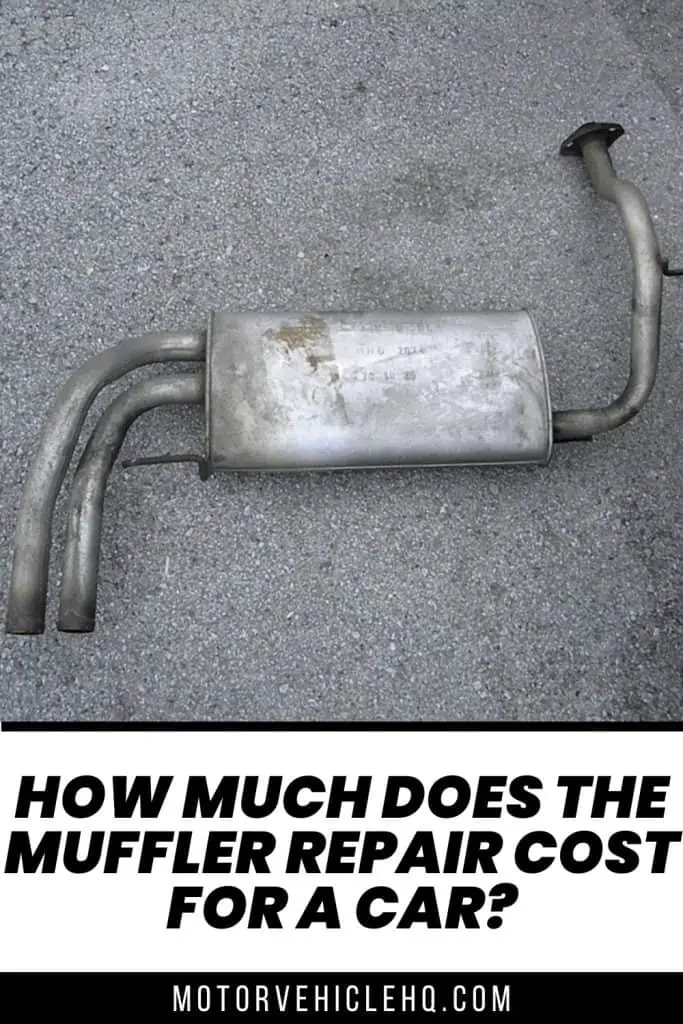
A muffler with pipes by CrowzRSA / CC BY-SA 4.0

Jim Wicks is the founder of MotorVehicleHQ. With over two decades of experience in the automotive industry and a degree in Automotive Technology, Jim is a certified car expert who has worked in various roles ranging from a mechanic, car dealership manager, to a racing car driver. He has owned more than 20 cars over the past 15 years. Ask him about any vehicle you see on the road and he can tell you the make, model and year. He loves the aesthetics of all things cars, and keeps his vehicles in pristine condition.
In his free time, Jim enjoys getting his hands dirty under the hood of a classic car or taking long drives along the country roads. His favorite car? A 1967 Shelby GT500, a true classic that, according to Jim, “represents the pure essence of American muscle.”
